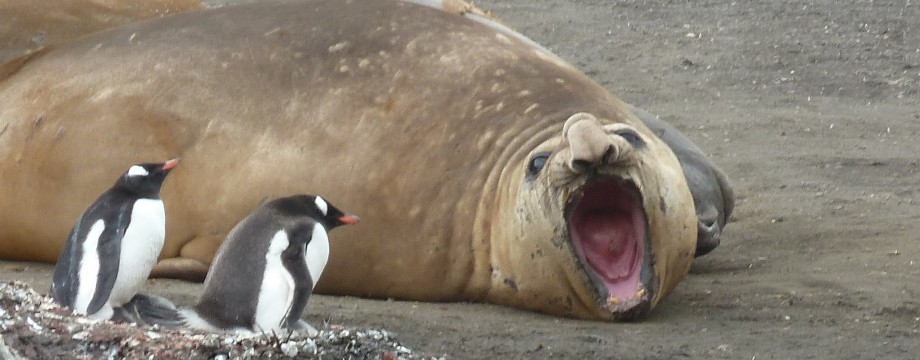Estonia is small enough that the bus ride from the western island town of Kuressaare to the southeastern university city of Tartu is probably the longest direct bus ride in the country, and it's just six hours.
I picked up a map of town, not realizing at the time it was a self guided walking tour, so I happily followed the trail as it took me all over the city. The walking tour brought me to ruins, bridges, and historical places and figures, but it primarily introduced me to dozens of statues across town dedicated to poets, patriots, scientists, and musicians.
Town Hall Square is home to the city's third Town Hall as the first two, built in the same spot, were destroyed by fire. The ground floor of the existing Town Hall dates back to the 1780s. In 1998, a fountain featuring two students kissing under an umbrella was added to the square. The fountain is meant to capture the city's eternally young spirit due to the university.
The Kivisilla Art Gallery is more commonly known as the leaning building owing to the fact that one side of the building rests on the old town wall and the other side is simply on piles.
Authors Oscar Wilde and Estonia's Eduard Vilde probably never met in real life but their lives overlapped and they share the same last name so someone decided to make a statue of the pair on conversation. Why not?
From most perspectives, this sculpture/fountain looks like a jumble of pipes.
However, when viewed from the right angle, it turns into a portrait of Yuri Lotman, a deceased scientist and University of Tartu professor. (If you're stuck, look for his nose and glasses!)
Jaan Poska, responsible for negotiating the terms of the 1920 Tartu Peace Treaty which granted Estonia full independence from Russia, is remembered with a statue.
Angel's Bridge probably gets its name from a corruption of the Estonian for “English bridge,” a nod to the style in which it was built.
Nearby is Devil's Bridge, built in 1903 to the memory of Emperor Alexander I.
The Cathedral ruins are incredible. Construction was completed in the fourteenth century but it was nearly destroyed during the Livonian War and then the remaining ruins were further damaged in a seventeenth century fire. The Cathedral is today connected to a university museum. As restoration is ongoing, I can't be sure how much of the ruins are original and what has been restored, but it is clear this will once again be a grand building when it is done.
This is a sacrificial stone that ancient Estonians apparently thought to have special healing powers, though I'm not sure what exactly was sacrificed here, when this happened, when it stopped, and if this is actually an original stone.
Jaan Tõnisson was an important politican and journalist when he was imprisoned by the occupying Soviets in late 1940. He was never heard from again.
Over one thousand terra cotta figures decorate the gothic exterior of St. John's Church which was built in the fourteenth century. As the church was significantly damaged during wars and fires, the terra cotta figures today are all replicas.
A gift to Tartu from Catherine II in 1776, construction finished in 1784 on the first stone bridge in the Baltic countries. First the Soviets attempted to blow up the bridge in 1941 and the Germans finished the job in 1944. The bridge of today, which in no way resembles the original design but is built in the same location, was completed in 1959.
To commemorate the seventieth anniversary of the market building, Tartu erected a statue of a pig with the different cuts of meat neatly marked. If you're hungry, you can find all of these cuts inside the market.
In 1977, the population of Estonia's second largest city reached 100,000.
Not on the walking tour was a group of trees that had been knit bombed. For the unaware, knit bombing is when people reclaim public space like lamp posts by covering them on knitwear. It's sort of like the woolen version of graffiti. Who ever said knitting wasn't bad ass?
I'm not one to get excited about gardens and I've killed more than a few flowers in my time. That said, the University of Tartu Botanical Garden took my breath away. It's just a few hectares in size, but the way it's been landscaped, it feels so much larger. The plants are labeled with small handwritten signs humbly stuck in the ground, making the garden seem like it's a friend's backyard instead of a two hundred year old university run garden. There are numerous quiet, secluded spots, which let you enjoy peace and beauty in solitude. It is far and away the nicest garden I've ever seen.
I couldn't stay away so following day I returned to the garden. Even though it was drizzling throughout the morning, there was a wedding in one of the larger central gardens and I saw at least two additional couples having their wedding photos taken on the grounds.
This has nothing to do with anything, but I had what was probably the best hot chocolate of life in Tartu. It was basically a melted chocolate bar poured into a cup and it was fantastic.
In the evening, I caught the bus back to Tallinn. It was a short stay in Tartu but the city won me over. Tallinn is charming and wonderful to visit, but if I ever moved to Estonia, I would be happy to live in Tartu.




































